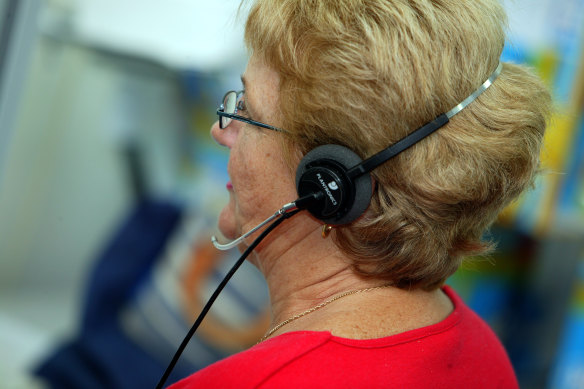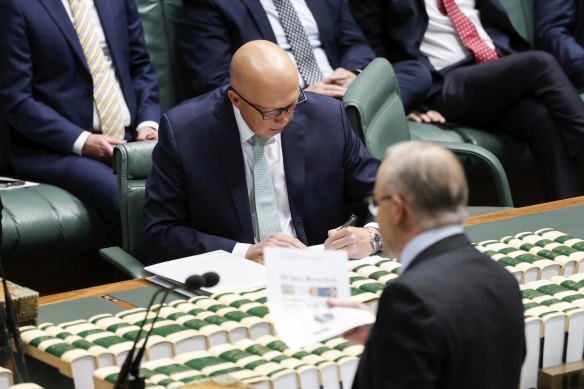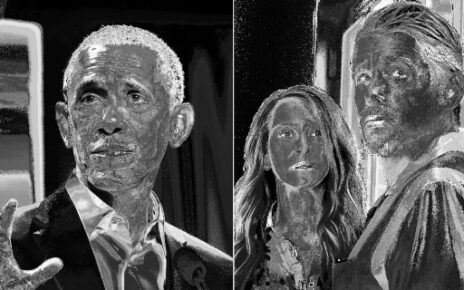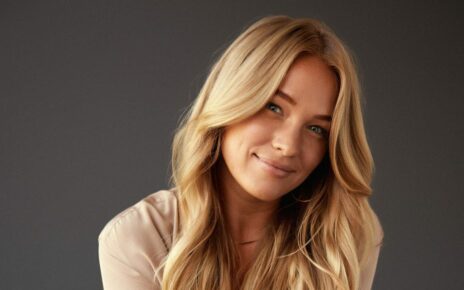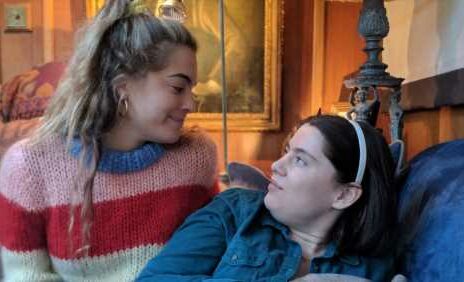Save articles for later
Add articles to your saved list and come back to them any time.
More than 3 million voters will be targeted by a barrage of calls and advertising from the No campaign after the anti-Voice movement used sophisticated software to identify persuadable voters in swing states.
Thousands of No volunteers in NSW and Victoria are making nightly calls to households in Tasmania and South Australia, as Fair Australia’s top campaigner, Chris Inglis, boasted during a training session that the No campaign has a much easier job than the Yes campaign, which requires support from a majority of voters nationally as well as a majority in four of six states to succeed.
Volunteers are targeting persuadable voters in smaller states. Credit: Robert Rough
This masthead revealed on Tuesday that Inglis had instructed volunteers to instil fear in voters’ minds, not to identify themselves upfront as No campaigners and to raise reports of financial compensation to Indigenous Australians if the Voice were set up.
In a campaign briefing, Inglis revealed extensive details about his campaign’s predictive software, which he claimed had identified 3.5 million undecided Australians in key states.
He told volunteers who had registered to work to defeat the Voice that the Yes campaign was “spraying” money by chasing 8.7 million voters nationwide.
“We don’t need Victoria or NSW,” Inglis said.
“It’s not that we don’t care about them. It means that we have a very, very targeted electoral strategy. We know what we need to do. We know who we need to talk to and there’s no point wasting cash like they are.
“We’re no longer trying to find 10 million votes out of nowhere. We know that we only need 3.5 million.
“They will spend a lot of time trying to convince Western Sydney, and it is very hard to convince Western Sydney to do anything irrational, and they’re finding that out the hard way.”
Conservative activist group Advance runs Fair Australia, the leading No campaign, which is aligned with the Coalition’s Indigenous Australians spokeswoman, Senator Jacinta Nampijinpa Price, but is separate from the anti-Voice campaigns run by the Liberal party.
Prime Minister Anthony Albanese waves a photocopy of The Sydney Morning Herald front page at Opposition Leader Peter Dutton. Credit: Alex Ellinghausen
Prime Minister Anthony Albanese said on Tuesday the revelations shone a light on the true nature of the No campaign, which he accused of “promoting fear rather than hope” as he held up the front page of The Sydney Morning Herald showing its story on Fair Australia’s tactics.
Opposition frontbencher Bridget McKenzie defended the No campaign’s approach of raising the prospect of financial reparations for Indigenous people, arguing the government was unable to say what the Voice would advocate for.
New polling shows the referendum on track to be defeated in all states except Tasmania, but
Labor’s national secretary, Paul Erickson, told Labor MPs on Tuesday that Opposition Leader Peter Dutton would suffer long-term damage as a result of his role in the campaign.
Erickson, who oversees Labor’s electoral research, claimed the No campaign’s cynicism contrasted poorly with Labor’s appeals to hope and the lasting effect of the referendum, even if Labor lost, would be to cement in voters’ minds an impression of Dutton as a wrecker.
According to four Labor MPs who requested anonymity because the briefing was private, Erickson stressed the importance of message discipline, intense campaigning, boosting referendum day turnout, and the approximately 5 million voters up for grabs.
In Fair Australia’s training session, Inglis explained how the No campaign’s voter identification tools helped direct its advertising, phone calls, and other forms of communication with voters still mulling their decision.
The campaign began with a commercially available list of 18 million people, Inglis said.
This dataset was then “washed against” what Inglis called a “geo-coded” address file of each household in Australia. Households were then categorised into small geographical areas for which the census gives demographic data such as age, education and income level.
“You mix it in a blender. You’ve got a bit of census, you’ve got the address files, you’ve got [Advance polling results],” he said.
“Everything then goes into saying, right well, according to your file, Janet is looking like she’s going to be a No voter, Terry looks like she’s going to vote Yes and Peter is going to vote no. And poor little Jimmy’s right in the middle open to persuasion.”
“For a model to be considered a predictive model, it has to be over 60 per cent accurate,” he said. “Our model has come in between 75 and 80 per cent accurate.”
On Sunday, a Fair Australia spokesman said the campaign’s messaging reflected the actual concerns of voters.
“We make no apologies for our volunteers being as persuasive as they possibly can be,” he said.
Cut through the noise of federal politics with news, views and expert analysis. Subscribers can sign up to our weekly Inside Politics newsletter here.
Most Viewed in Politics
From our partners
Source: Read Full Article
